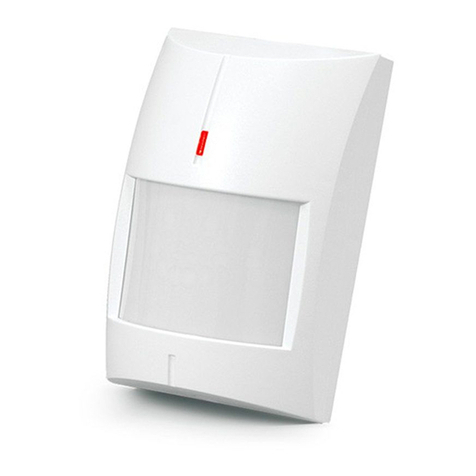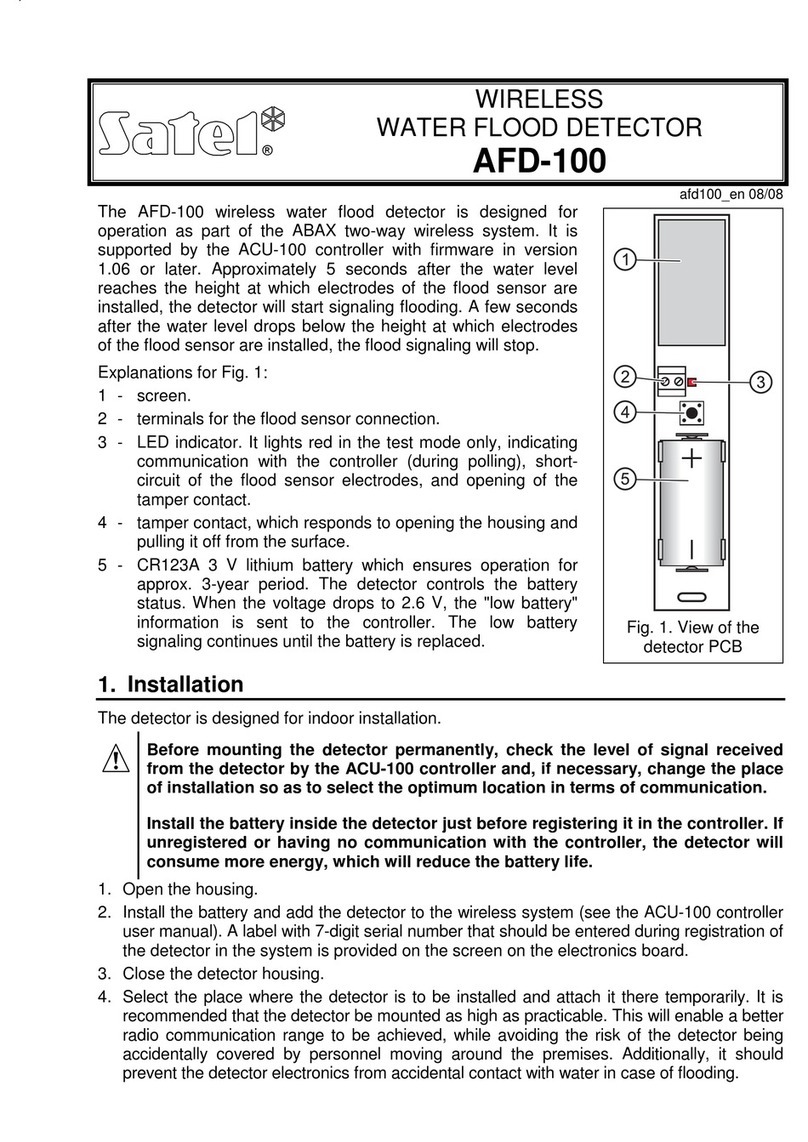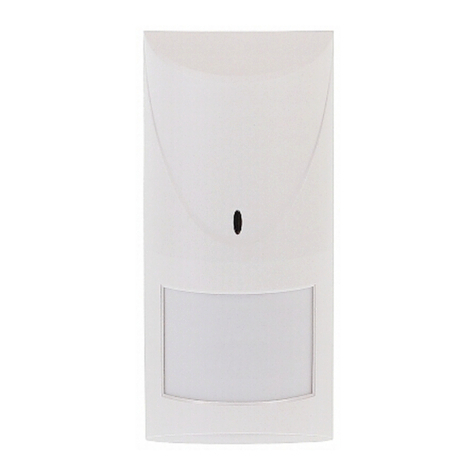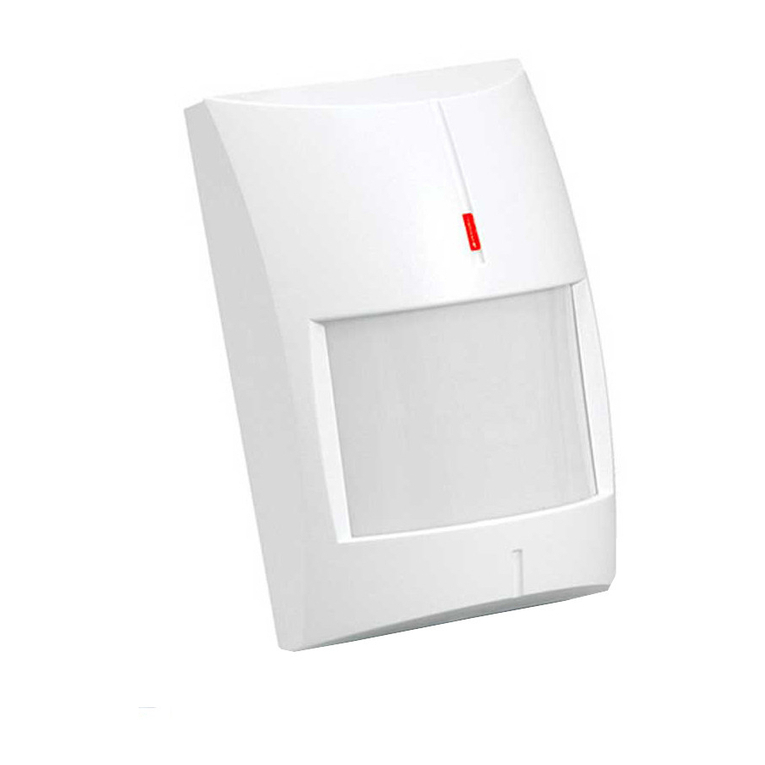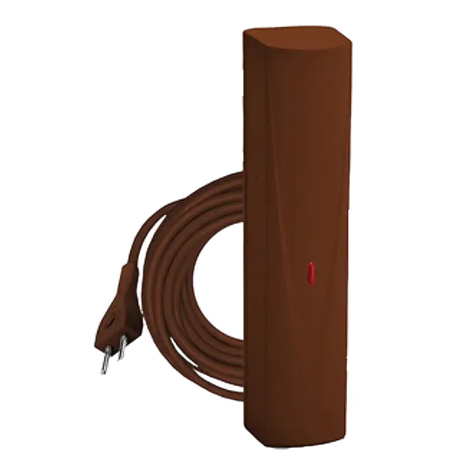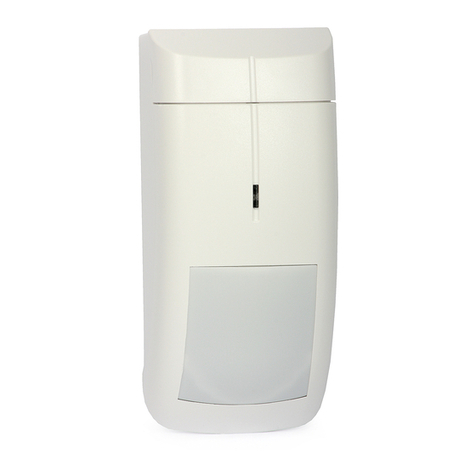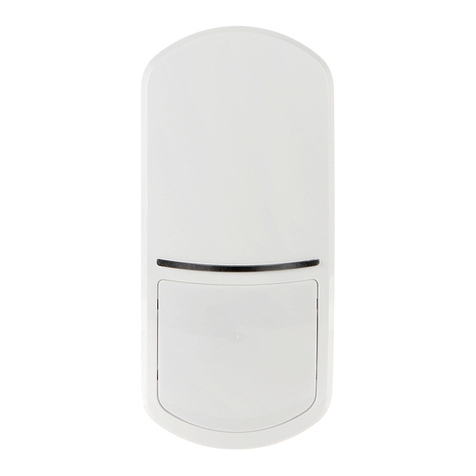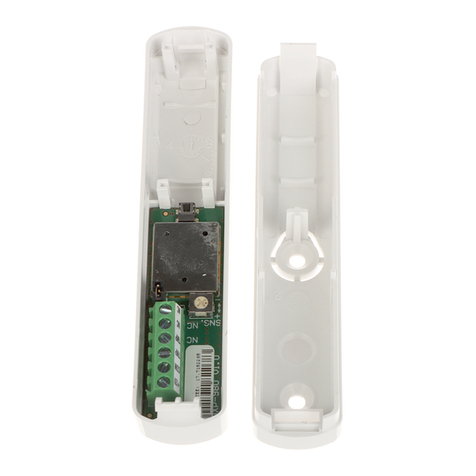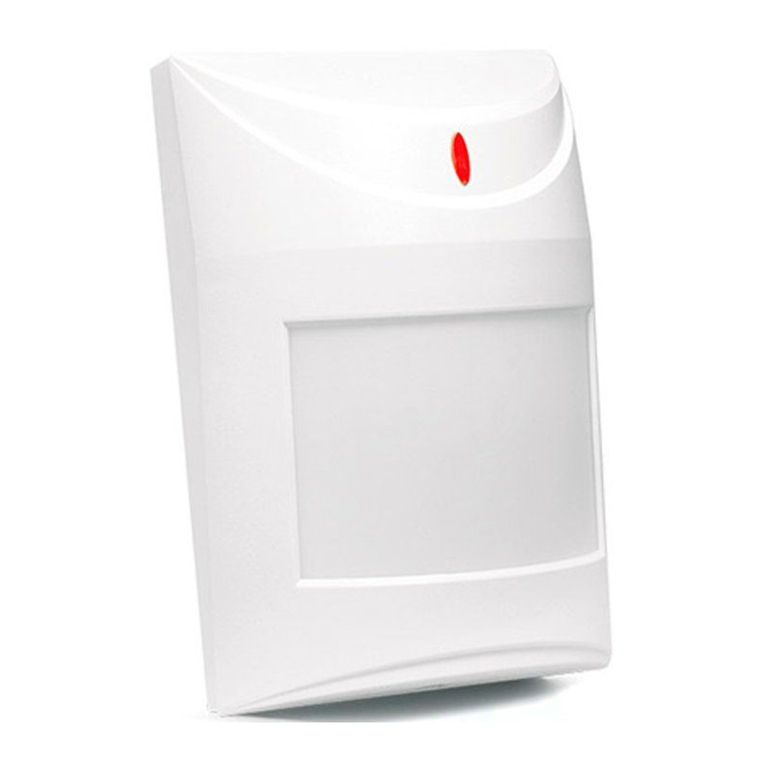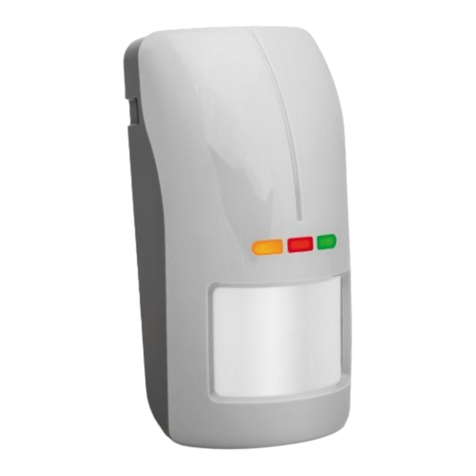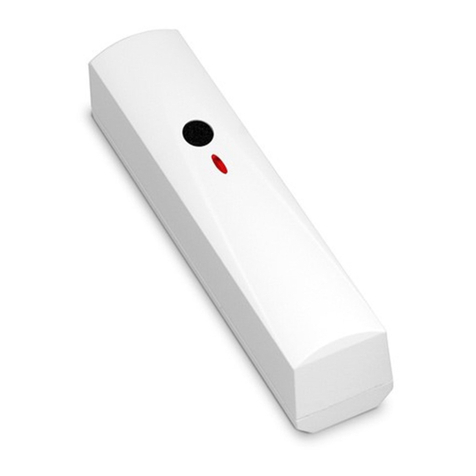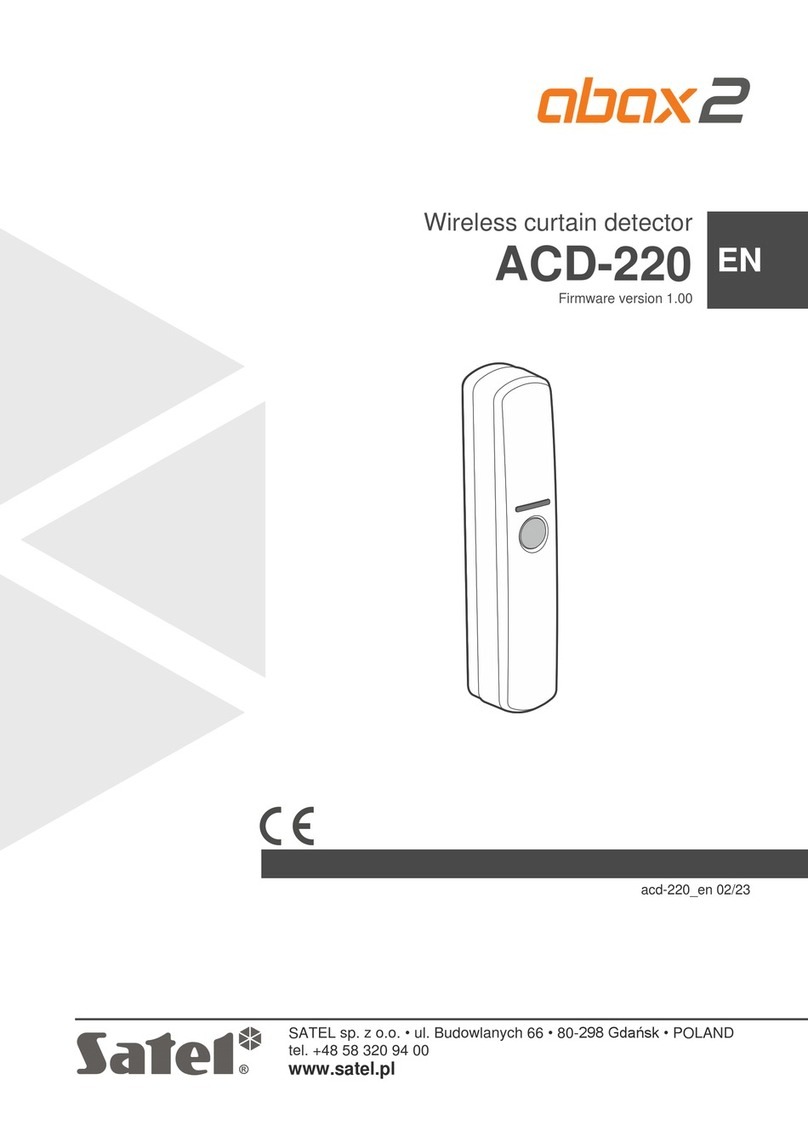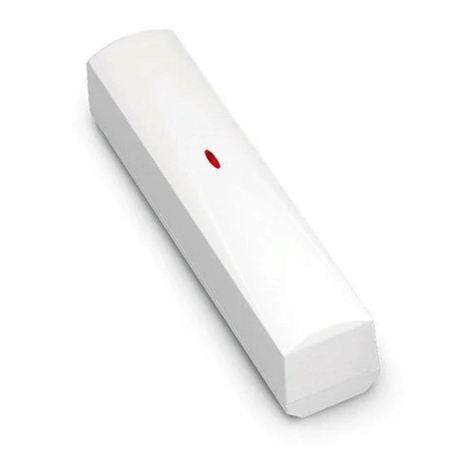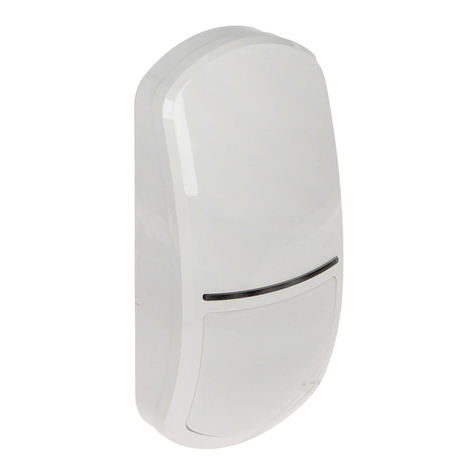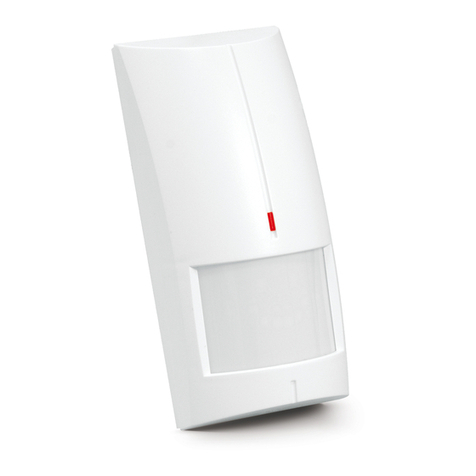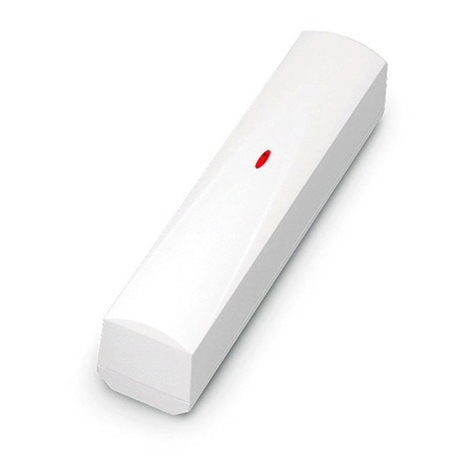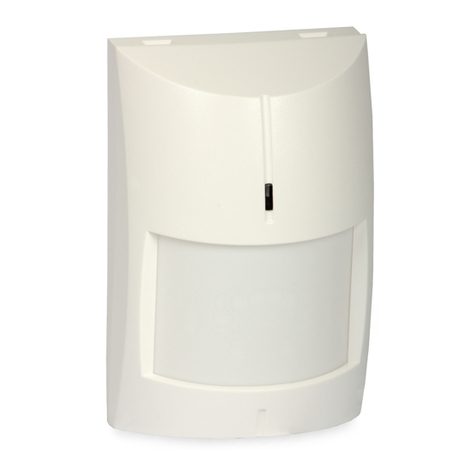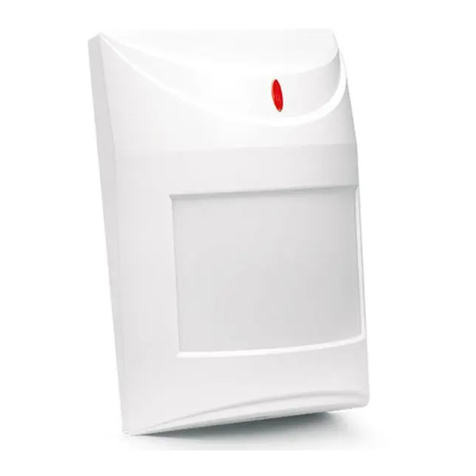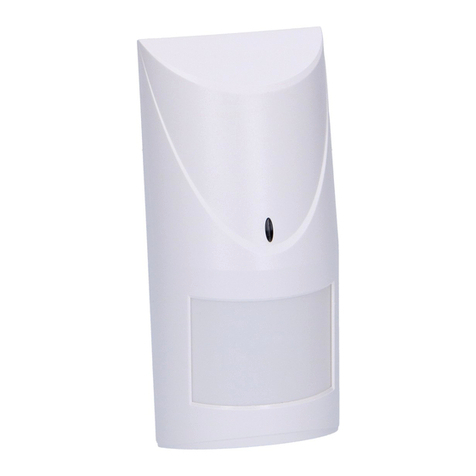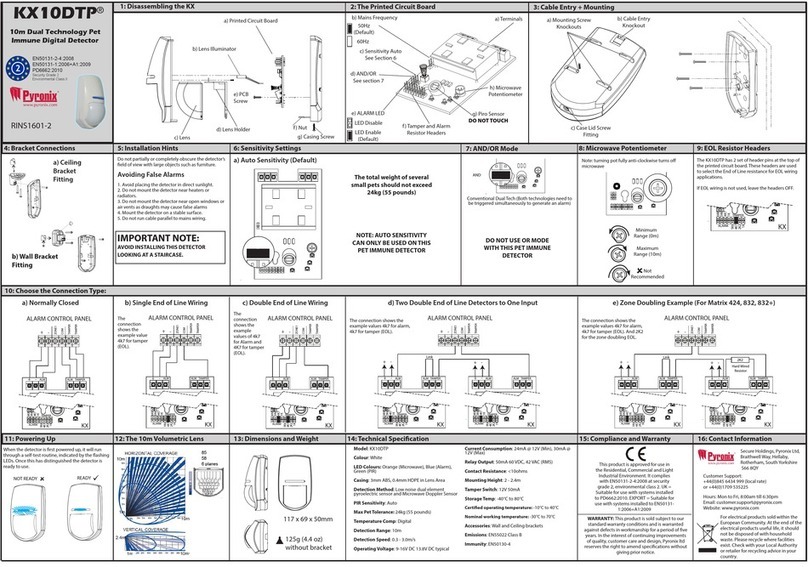
2 MGD-300 SATEL
3. Operation description
The detector will trigger an alarm when a low frequency sound (impact) followed by a high
frequency sound (glass break) are registered in less than 4 seconds. The alarm is also
triggered in the case of opening the tamper contact. Information on the alarm is sent by radio
to the MICRA alarm module or VERSA-MCU controller.
Every 15 minutes, the detector sends a transmission containing information on the status of
the tamper contact and battery. Periodic transmissions are used to monitor presence and
operation of the detector.
In the test mode and for 20 minutes after inserting the battery or opening the tamper contact
the LED indicates:
alarms: ON for 2 seconds;
periodic transmissions: ON for 80 milliseconds;
test mode: short flash every 3 seconds.
4. Installation
There is a danger of battery explosion when using a different battery than
recommended by the manufacturer, or handling the battery improperly.
Be particularly careful during installation and replacement of the battery. The
manufacturer is not liable for the consequences of incorrect installation of the
battery.
The used batteries must not be discarded, but should be disposed of in
accordance with the existing rules for environment protection.
The detector is designed for indoor installation. The protected glass surfaces must be within
the detection range. Please note that shades, curtains, furniture upholstery, acoustic tiles,
etc. absorb the sound and adversely affect the detector operating range.
1. Open the detector enclosure (Fig. 4).
2. Adjust the detection sensitivity using the potentiometer
3. Set the jumper as shown in Fig. 2 to enable the test mode.
4. Install the battery and register the detector in the MICRA alarm
module or VERSA-MCU controller (see the manual for MICRA
alarm module or VERSA-MCU controller).
5. Close the detector enclosure.
6. Select the mounting location. It is recommended that the detector
be mounted high up. This will enable a better radio
communication range to be achieved, while avoiding the risk of the
detector being accidentally covered by personnel moving around
the premises. Make sure that transmissions from the detector
placed at the selected location reach the MICRA alarm module /
VERSA-MCU controller. Close and open the tamper contact to
send a transmission. If the alarm transmission is received,
continue the installation. If the alarm transmission is not received,
select a different mounting location and repeat the test.
7. Check that the LED comes on after using the device which
generates glass break sound (INDIGO TESTER) within the
detection range.
8. Open the detector enclosure (Fig. 4).
